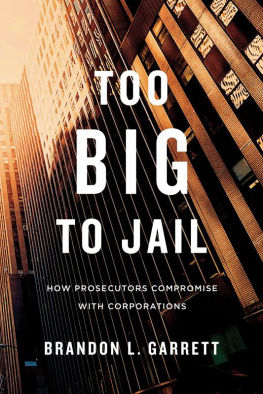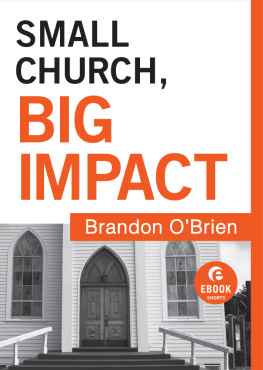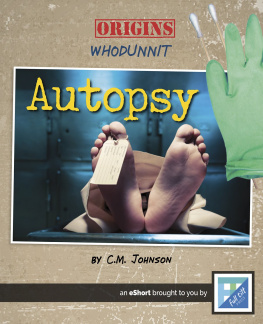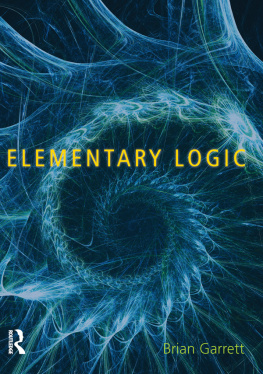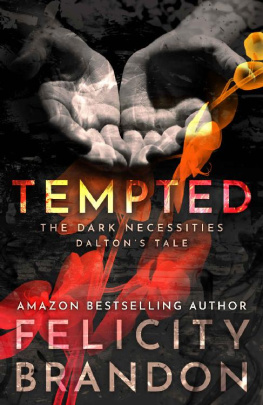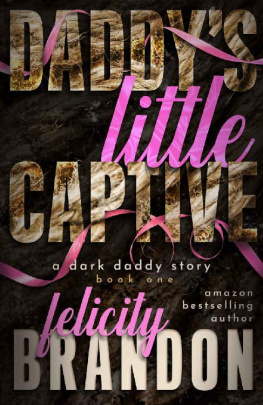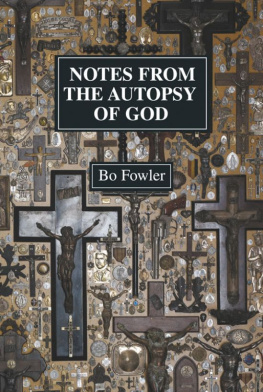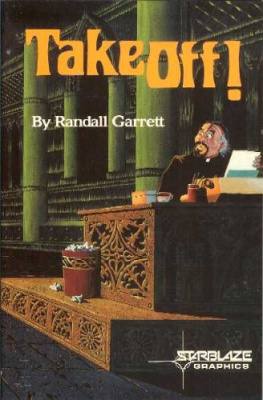Brandon L. Garrett - Autopsy of a Crime Lab
Here you can read online Brandon L. Garrett - Autopsy of a Crime Lab full text of the book (entire story) in english for free. Download pdf and epub, get meaning, cover and reviews about this ebook. publisher: University of California Press, genre: Detective and thriller. Description of the work, (preface) as well as reviews are available. Best literature library LitArk.com created for fans of good reading and offers a wide selection of genres:
Romance novel
Science fiction
Adventure
Detective
Science
History
Home and family
Prose
Art
Politics
Computer
Non-fiction
Religion
Business
Children
Humor
Choose a favorite category and find really read worthwhile books. Enjoy immersion in the world of imagination, feel the emotions of the characters or learn something new for yourself, make an fascinating discovery.
- Book:Autopsy of a Crime Lab
- Author:
- Publisher:University of California Press
- Genre:
- Rating:3 / 5
- Favourites:Add to favourites
- Your mark:
- 60
- 1
- 2
- 3
- 4
- 5
Autopsy of a Crime Lab: summary, description and annotation
We offer to read an annotation, description, summary or preface (depends on what the author of the book "Autopsy of a Crime Lab" wrote himself). If you haven't found the necessary information about the book — write in the comments, we will try to find it.
Autopsy of a Crime Lab — read online for free the complete book (whole text) full work
Below is the text of the book, divided by pages. System saving the place of the last page read, allows you to conveniently read the book "Autopsy of a Crime Lab" online for free, without having to search again every time where you left off. Put a bookmark, and you can go to the page where you finished reading at any time.
Font size:
Interval:
Bookmark:

Brandon L. Garrett

UNIVERSITY OF CALIFORNIA PRESS
University of California Press
Oakland, California
2021 by Brandon L. Garrett
Library of Congress Cataloging-in-Publication Data
Names: Garrett, Brandon, author.
Title: Autopsy of a crime lab : exposing the flaws in forensics / Brandon L. Garrett.
Description: Oakland, California : University of California Press, [2021] | Includes bibliographical references and index.
Identifiers: LCCN 2020043891 (print) | LCCN 2020043892 (ebook) | ISBN 9780520379336 (cloth) | ISBN 9780520976634 (ebook)
Subjects: LCSH : DNA fingerprintingLaw and legislation. | Evidence, Expert. | Criminal investigation. | Forensic sciences. | Forensic genetics.
Classification: LCC K 5479 . G 37 2021 (print) | LCC K 5479 (ebook) | DDC 345/.064dc23
LC record available at https://lccn.loc.gov/2020043891
LC ebook record available at https://lccn.loc.gov/2020043892
Manufactured in the United States of America
29 28 27 26 25 24 23 22 21
10 9 8 7 6 5 4 3 2 1
To Kerry, Alex, and Zack
PART I
PART II
PART III
Imagine that you have been selected to sit on a jury in a criminal trial. An expert takes the stand. He emphasizes his credentials as a senior fingerprint examiner at the Federal Bureau of Investigation (FBI), in Quantico, Virginia, the preeminent crime lab in the country. A series of explosions had killed over 190 people in a terrorist attack. The expert proceeds to confidently describe a forensic hit, comparing a fingerprint of the defendants to a print found on a bag of detonators in a white van parked near the scene. The expert explains that he studied high-resolution images of the prints on a computer screen, identified fifteen points they shared, and reached a firm conclusion: a 100 percent identification. Next, he asked two experienced colleagues to review the prints: the chief of his unit and a retired FBI examiner with thirty-five years of experience. Each of the three experts agreed 100 percent with his conclusion.
The judge instructs you, as a juror, to carefully observe all of the evidence in the case. The judge tells you that to convict you must be certain beyond a reasonable doubt that the defendant was the culprit. Would you convict?
Thats not my fingerprint, your honor, says the defendant, in response to this evidence.
What ... the judge responds. It wasnt your fingerprint?
If it is, I dont know how it got there, he insists. It is not my fingerprint.
In the real case, Brandon Mayfield, a Portland, Oregon lawyer, pleaded for his freedom in an Oregon federal courtroom. Federal agents testified that they identified his fingerprint on a plastic bag with detonators found near the bombing of four commuter trains in Madrid, Spain, that killed 193 people and injured about two thousand more. The judge sided with the FBI and ordered Mayfield detained as a material witness to terrorism. Mayfield knew that he was innocent. He had never set foot in Spain. He had converted to Islam years earlier, and the FBI theorized that perhaps he had formed an allegiance to militant Islamic groups and traveled under a fake name. His case would come to reshape the course of forensics, but only after he faced the prospect of indefinite detention and the death penalty.
Would you convict a person if the only evidence in the case was a fingerprint comparison? What if it was a bite mark, a drug test, or a DNA test? Before making the momentous decision to convict a person, you should ask how reliable the evidence is. Forensic evidence refers broadly to evidence in legal matters that involves scientific methods; my focus in this book is on the wide array of forensic evidence used in criminal cases. What is most surprising is that many forensic examiners do not use methods that are based on solid scientific research. Indeed, with the exception of DNA testing, the experts who link evidence to particular defendants at criminal trials cannot give you a straight answer to the question, How reliable is your evidence? Techniques like fingerprinting have been used for over a hundred years. Surely, someone must know how reliable they are. Yet not only is reliability untested and unknown, but the experts do not candidly admit to the judge and the jury that deep uncertainty lies at the foundations of their work. They do not admit that no one has carefully tested the reliability of the methods they use or the work they do on routine cases. Nor do they admit that the crime lab where they work lacks a rigorous testing program. Instead, forensic analysts testify in court just like the actors on popular forensics shows: they claim to find a perfect match. Take, for example, an episode of the popular show CSI: Miami, where the investigators, like in Mayfields case, had just a single fingerprint.
The FBI analysts in Brandon Mayfields case were even more certain: they were 100 percent certain. They were so certain that when Spanish authorities issued a report with a negative conclusion, contrary to the FBIs fingerprint identification, the FBI fingerprint analysts forcefully disagreed and flew to Madrid, Spain, to present their findings, with blown-up photos illustrating their work. The FBI placed Mayfield under twenty-four-hour surveillance, and then they arrested him. Mayfields lawyer counseled him that he could be detained indefinitely and might face the death penalty. Then, on May 20, 2004, the prosecutor stood up in court and told the judge something unexpected: that morning the government received some information from Spain which casts some doubt on the identification. Spanish authorities determined completely that the print belonged to a known Algerian terrorist. The FBI agreed to release Mayfield, dropped all charges a few days later, apologized to Mayfield, and a federal investigation followed.
Our crime labs need an autopsy. The episode profoundly harmed Mayfield and his family. The failure of these FBI agents brought home how little we know about the reliability of forensic evidence. We need to know why these errors occur. After all, fingerprints have been used in court for over a hundred years. Fingerprint examiners insisted for decades that they had an error rate of zero. If three experienced fingerprints experts could get it so badly wrong, in a high-profile case, then how reliable is fingerprinting? How about all of the other forensics? The problem cried out for a serious scientific inquiry. A mini-autopsy did occur in response to the Mayfield case itself, when the U.S. Department of Justice wrote a lengthy report identifying specific problems with the work done in Mayfields case. However, the investigators did not try to answer the most fundamental question that you would want answered if you were sitting on a jury: How reliable is a fingerprint comparison? No scientific studies had been done on the question. The investigators briefly noted in their report that according to critics, the basic premises of fingerprint
A few lone voices, mostly in academia, had raised reliability concerns for years, but without any success in the courts. Particularly when DNA testing became more common in the 1990s, leading scientists, law professors, social scientists, and a few defense lawyers began to ask what research supported the traditional non-DNA forensics. They were ignored. In 1993, the U.S. Supreme Court issued its landmark decision in Daubert v. Merrell Dow Pharmaceuticals, Inc. , holding that federal judges must act as gatekeepers to ensure that experts use reliable methods. Lawyers expected that judges would finally scrutinize forensic science in court, particularly after many states adopted this federal rule. A few judges hesitantly raised reliability concerns about fingerprinting, but the FBI shut them down with confident assertions that such techniques were foolproof.
Font size:
Interval:
Bookmark:
Similar books «Autopsy of a Crime Lab»
Look at similar books to Autopsy of a Crime Lab. We have selected literature similar in name and meaning in the hope of providing readers with more options to find new, interesting, not yet read works.
Discussion, reviews of the book Autopsy of a Crime Lab and just readers' own opinions. Leave your comments, write what you think about the work, its meaning or the main characters. Specify what exactly you liked and what you didn't like, and why you think so.


